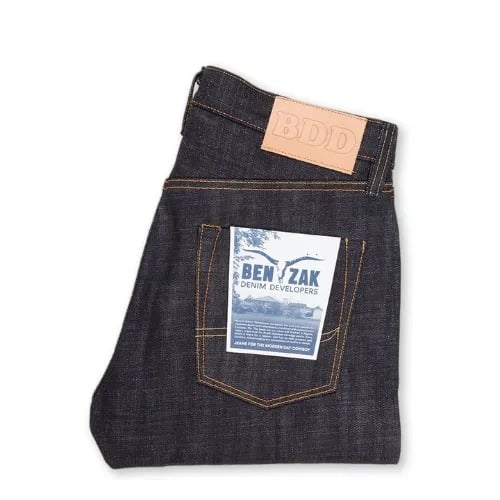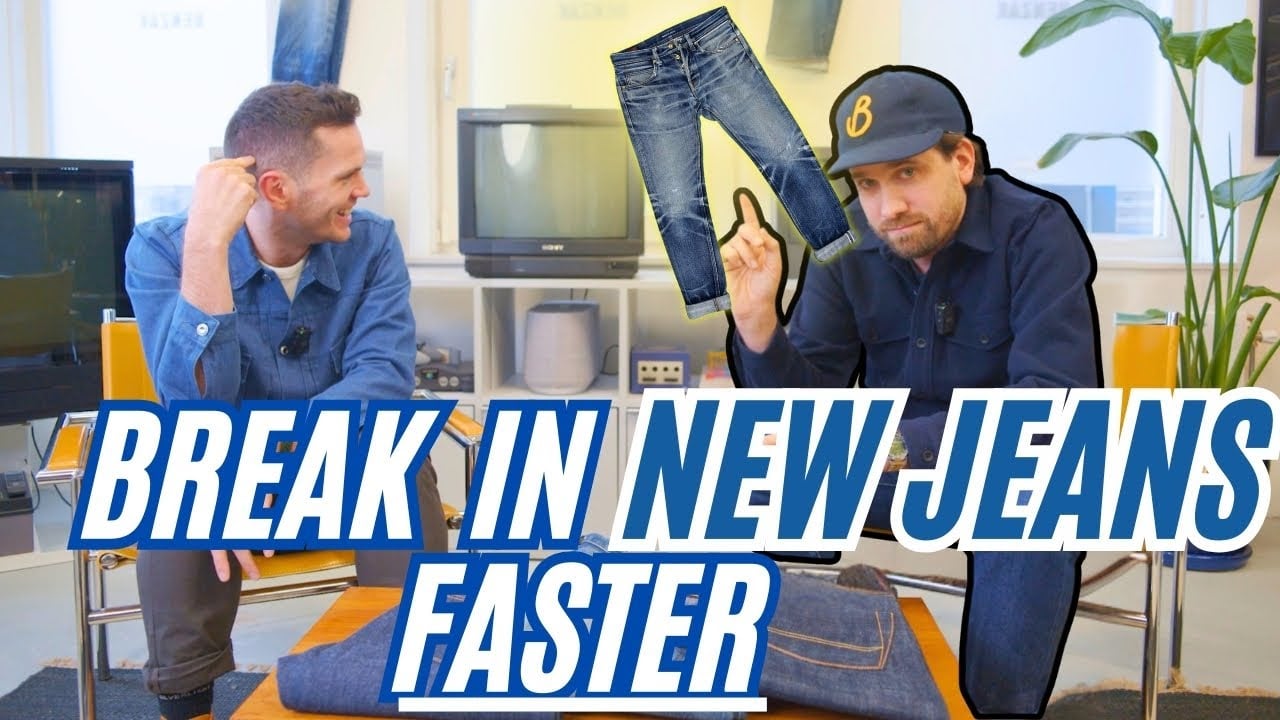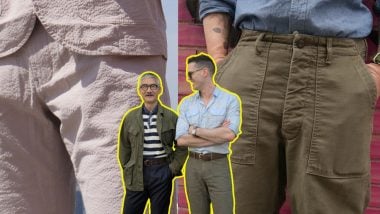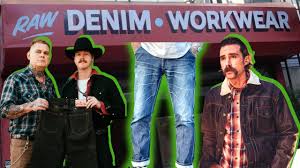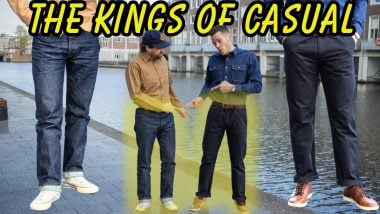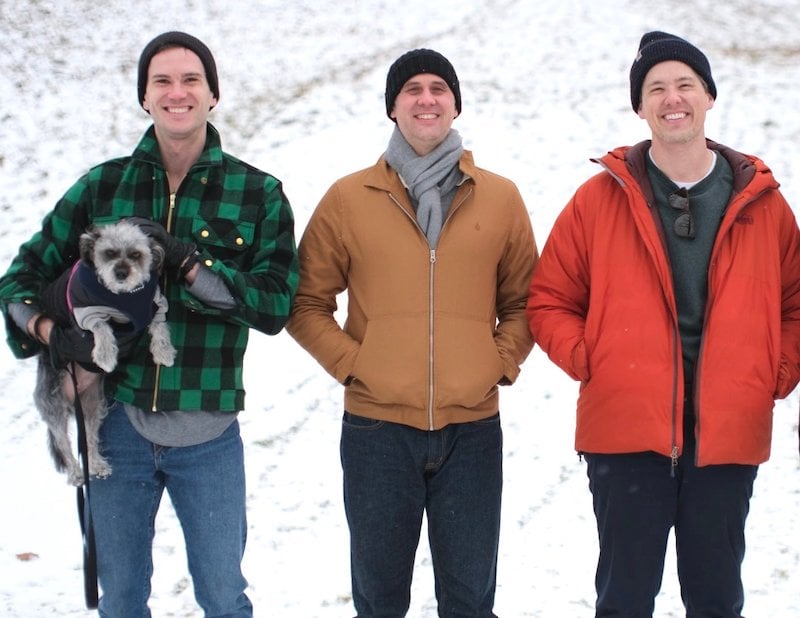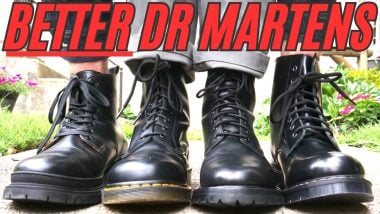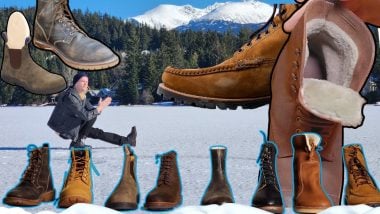Raw Denim vs Selvedge vs Sanforized vs One-Wash: A Beginner’s Guide to Nice Jeans

Expert Verified By: Mohsin Sajid | Denim Expert & Professor
Practically everyone on Earth wears jeans, so is there a really nice version of the most common casual pants? Yes! And the good news is that the higher price is actually justifiable. Well, it can be, if you know what to look for.
In this guide, we’re going to define the words you’ll often see used to describe expensive jeans: selvedge, raw, sanforized, and one wash. Even if you aren’t a fabric nerd like us, all of this is important because some of these terms affect the size you should order, and some of them don’t.
To ensure everything is accurate, we reached out to two leading figures in the industry: Mohsin Sajid, a denim historian and founder of the Britain-based brand Endrime; and Lennaert Nijgh, founder of Amsterdam’s Benzak Denim Developers.
Whether you’re new to denim or looking to understand the details behind your favorite pairs, this guide breaks down the fundamentals.
What Selvedge Denim Is: Old Fashioned and Strong
- Woven on shuttle looms: These antique looms make denim much more slowly and cost more to operate and maintain, justifiably adding to the price.
- Self-finished edge: You can see the edge when you cuff your jeans, which shows you’re wearing nice stuff.
- Slightly stronger: Because the weft is a continuous piece of yarn that runs back and forth along the fabric, selvedge denim is a little stronger than regular stuff.
- Usually thicker: Selvedge denim tends to be thicker than typical mall brands, also contributing to the price.
These days, almost all denim in the world is woven on projectile looms. But before the mid-20th century, when projectile looms became commonly used for denim, it was made on shuttle looms. Selvedge (or selvage) denim is woven on these antique shuttle looms.

The main reason selvedge denim is expensive is that shuttle looms make denim about ten times more slowly than conventional denim, plus the machines are rare, expensive, and hard to maintain.
“These are machines that have been taken care of, have been cherished, are being operated by people who need a lot of skill and experience to know what they’re doing,” says Lennaert. “So the quality that comes out of those machines is typically higher than you would get from projectile looms, though I’m talking in generalities: there are a lot of high-quality, non-selvedge fabrics out there, and there are also shitty selvedge fabrics.”
Benzak's Japanese and European-made denim is among the best. From selvedge, to neppy to slubby (in a variety of fits), they have an option for every denimhead.
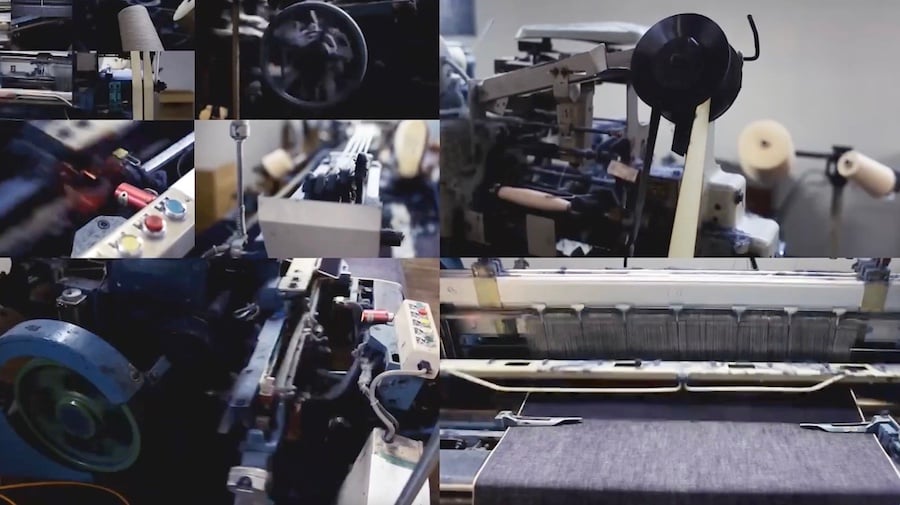
Selvedge comes from the words “self edge”, which refers to the edge of the fabric. It’s finished to keep it fraying, and it’s the detail you can see when you cuff your selvedge denim jeans.
Below you’ll see that edge, which is called a “selvedge ID” because it identifies the fabric as selvedge. Many companies customize their ID as a form of branding: Momotaro, for instance, is well known for the pink on their selvedge ID below.
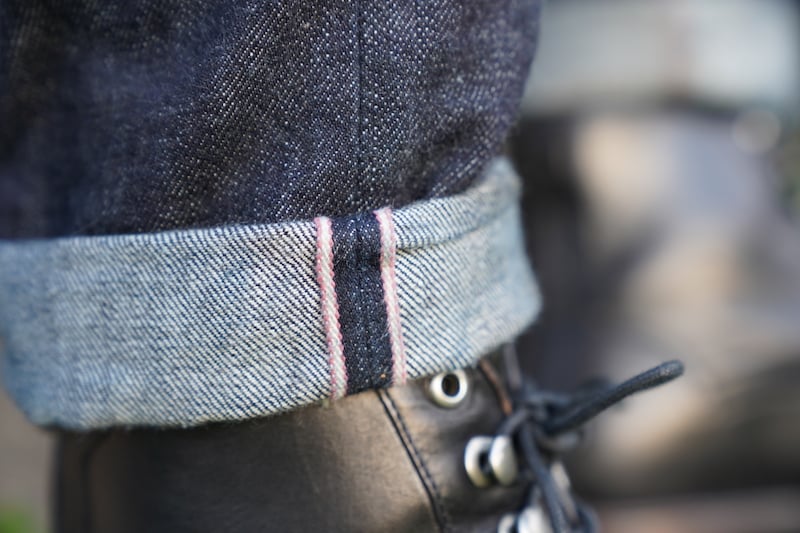
Is Selvedge Denim Better or Stronger than Regular Denim?
- Selvedge denim is technically stronger, assuming you’re comparing it with conventional denim that’s otherwise identical
It costs more because it’s harder to make, but is it better? Like, is selvedge denim stronger or more long-lasting than conventional denim? Yes, but…
First of all: even if it’s the exact same fabric, it’s not stupid to pay more because one is harder to make. Plenty of people are attracted to selvedge denim’s historicity or to the way it requires more human expertise, which are perfectly good reasons to pay more.
Second: most jeans are about 11 or 12 ounces, and selvedge tends to be heavier. It doesn’t have to be (there are lightweight options out there), but selvedge denim is usually thicker than mall brands. So it contains more cotton (increasing the price) and is indeed more durable.
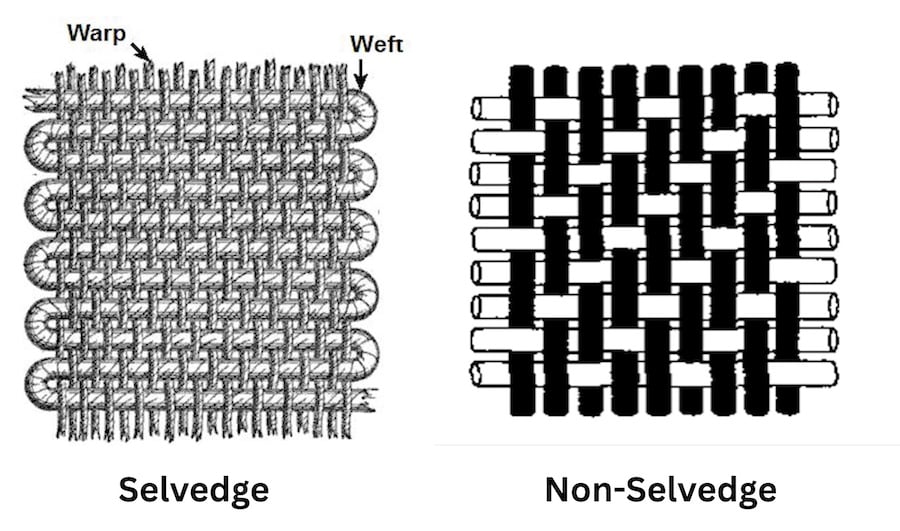
But Lennaert taught me something new: even if you have some selvedge denim and some conventional denim that are the exact same weight, the selvedge is actually stronger.
“Projectile looms are typically up to one and a half meters, making fabric that’s almost twice as wide as a selvedge fabric,” he explains. “And because the weft yarn is a continuous yarn — it’s the same one going back and forth on a more narrow fabric — selvedge tends to be a bit stronger as well.”
Just remember that the denim’s overall strength also depends on other factors like cotton quality, yarn thickness, and weave density.

What Raw Denim Is: Unprocessed and Pure
- “Raw denim” largely means it hasn’t been washed, distressed, or faded before you buy it.
- Stiff feeling: Raw denim feels stiff and starchy, requiring a few wears before it feels comfortable.
- Unique fades: Enthusiasts love the fact that you, the wearer, produce the fades your jeans will eventually show.
- “Raw” doesn’t necessarily mean it’s selvedge, unsanforized, or non-stretch.
Raw denim, sometimes called “dry denim,” has not undergone any washing or distressing at the factory or the fabric mill.
“In the denim world, raw means unwashed,” says Mohsin. “If it’s not raw, it’s probably been washed to remove starch, and they probably added some softener to improve comfort.”
Raw denim hasn’t been pre-faded like most of the jeans you’ll see at the mall.
So does raw denim look different? Not necessarily. Not all unfaded blue jeans are raw — even when they don’t look distressed, most jeans still get washed at the factory to rinse out starch and give them a more lived-in feel. The average person doesn’t want to have to break in their jeans.
If you buy non-raw, unfaded jeans, you’ll still be able to fade them yourself. But the fades won’t be identical to what you’d get with raw jeans because the fabric is quite different when it first arrives — the extra crispiness means they won’t wear quite the same as washed jeans.
Further Reading
How to Break In Raw Denim Fast
Raw denim is cool, but it often feels stiff as cardboard. Here’s how to expedite the break-in process.
Learn more →
Selvedge Denim vs. Raw: Are They the Same?
No! Selvedge refers to how it’s woven, and raw refers to how it’s been processed afterward.
It’s certainly true that most selvedge denim is raw, and it’s probably true that most truly raw denim is selvedge, simply because guys who like one tend to like the other. But they’re absolutely not interchangeable.
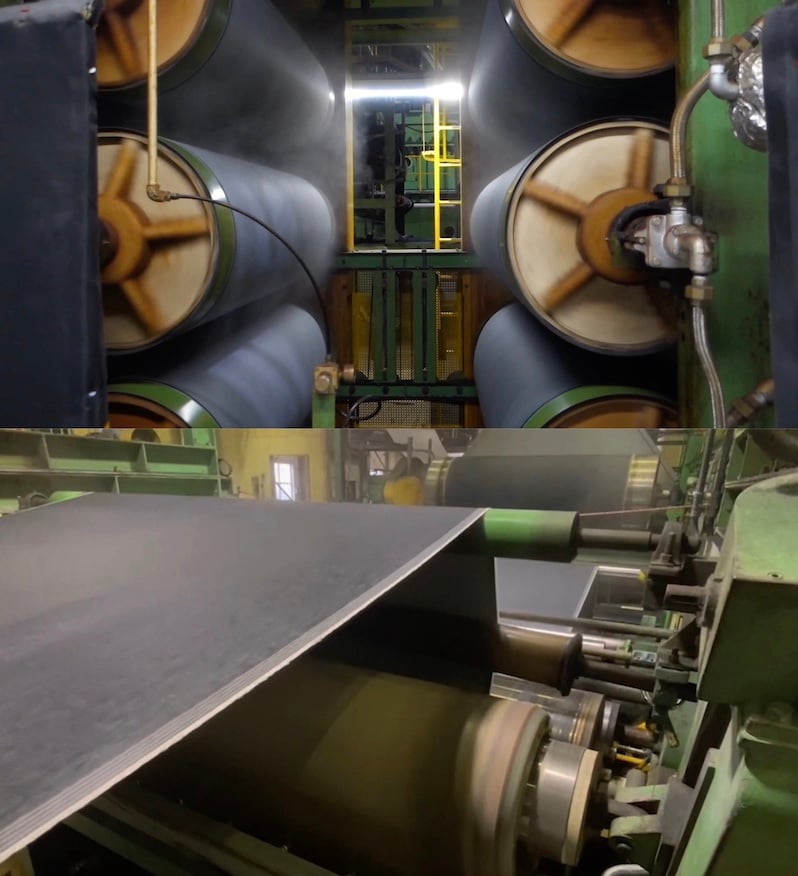
What Sanforized Denim Is: Minimizing Shrinkage
- Treats denim to minimize shrinkage: Unsanforized jeans shrink two sizes when they’re first washed; sanforized denim doesn’t
- Sanforizing isn’t washing: Sanforizing treats fabric with heat, steam, water, and/or chemicals, but it’s not the same as washing it.
“Raw” and “selvedge” are probably the most important terms to know because even in the world of guys who love old fashioned and unprocessed denim, very few jeans are sold unsanforized, also called loomstate and shrink to fit.
“It’s basically a way of treating fabric, mostly cotton-based fabrics, that basically shrinks it,” says Mohsin. “They put it through a massive sanforization machine that’s bigger than a football pitch. It gets rid of most of the shrinkage — and it’s still raw.”
“Without it, your jeans would shrink up to ten percent, or about two sizes,” says Lennaert. “When your denim is sanforized, that whole shrinking process has been done for you already on the fabric level.”
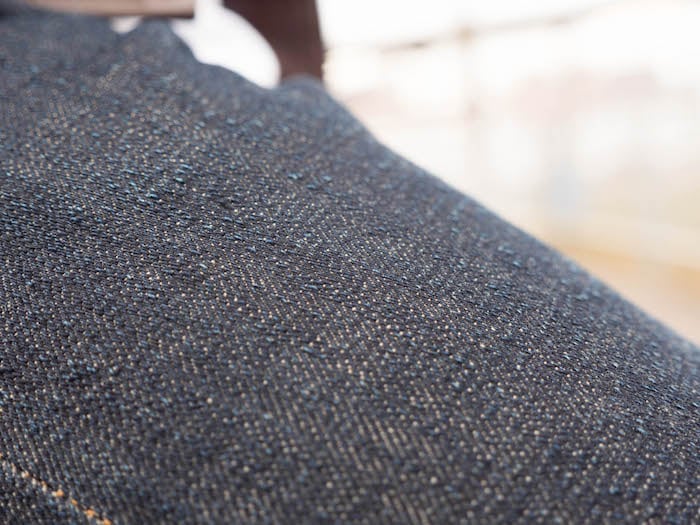
You might have seen old Levi’s labeled “Shrink To Fit“: that’s because it was unsanforized, so the jeans would shrink on their first wash. Sanford Lockwood Cluett invented the process in the 1930s, and almost every brand now employs it. If they didn’t, the headache of dealing with customer returns would be too much.
Usually, the process runs fabric through heat rollers that quickly dampen, stretch, and steam it. As part of efforts to become more sustainable, companies are always experimenting with new methods to sanforize.
“There are now different chemical processes, and some companies use ‘ozone’ technology that draws water from the air to treat the fabric,” says Mohsin. “So now there are ways of doing it without hardly any water.”
Further Reading
Stretch Vs Non-Stretch Jeans: Lessons From a Factory
We find out how they make jeans stretchy and if that actually affects their durability.
Learn more →
Why Would Someone Buy Unsanforized Denim?
- All denim used to be unsanforized, so there’s a historicity to it
- Some consider only unsanforized denim to be raw, so they feel more ownership over their jeans
- Unsanforized denim wears in slightly differently, which some enthusiasts like
As you’ve seen, many enthusiasts in this space are attracted to more old fashioned denim, and jeans were worn for many decades before sanforization was invented. Therefore, unsanforized denim can be seen as more historically authentic.
Some people argue that sanforized denim is no longer raw, and they’re attracted to more fully owning the evolution of their denim from its “loom state.”
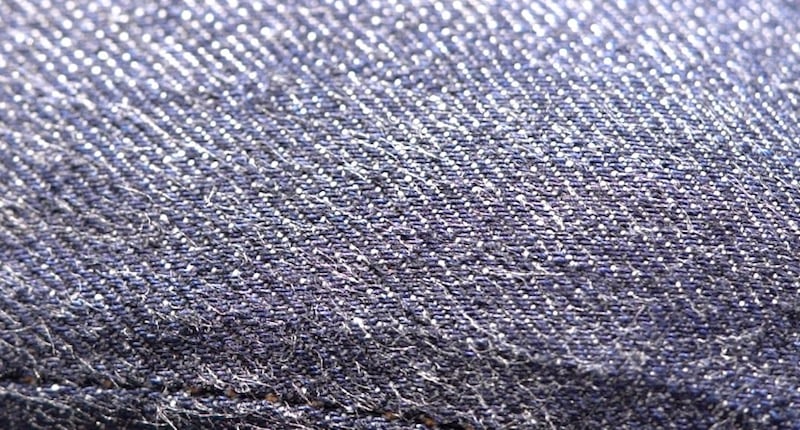
“Being a denim designer and historian, I personally like it when it’s unsanforized. If you go back to the 30s and 40s everything was made like that,” says Mohsin. “When unsanforized jeans shrink and wear in, it’s different from other raw denim: you get more puckering around the pocket, the side seams twist around your leg, it’s just a more wonderfully unrefined product.”
Some guys also think their jeans fit better if they buy them unsanforized — as in the fabric molds better to the shape of their body — but experts aren’t in total agreement either way.
Just remember: if you’re buying unsanforized denim, it’ll shrink about two sizes. You might want to first wash or soak it in cold water, which won’t shrink it quite as much. If that makes them fit well, never wash them on hot. If they’re still loose, try washing them on hot.
Further Reading
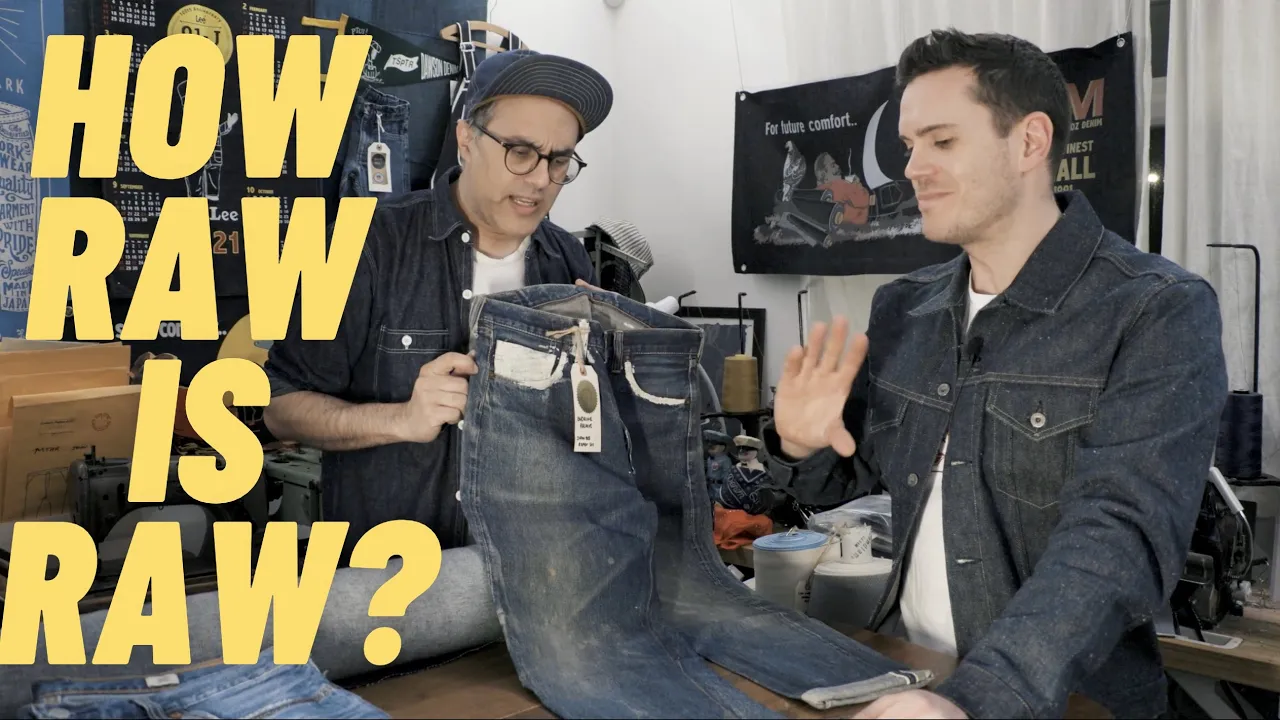
Sanforized vs Unsanforized: A Denim Historian’s Breakdown
We flew to London to learn what most people miss when it comes to denim.
Learn more →
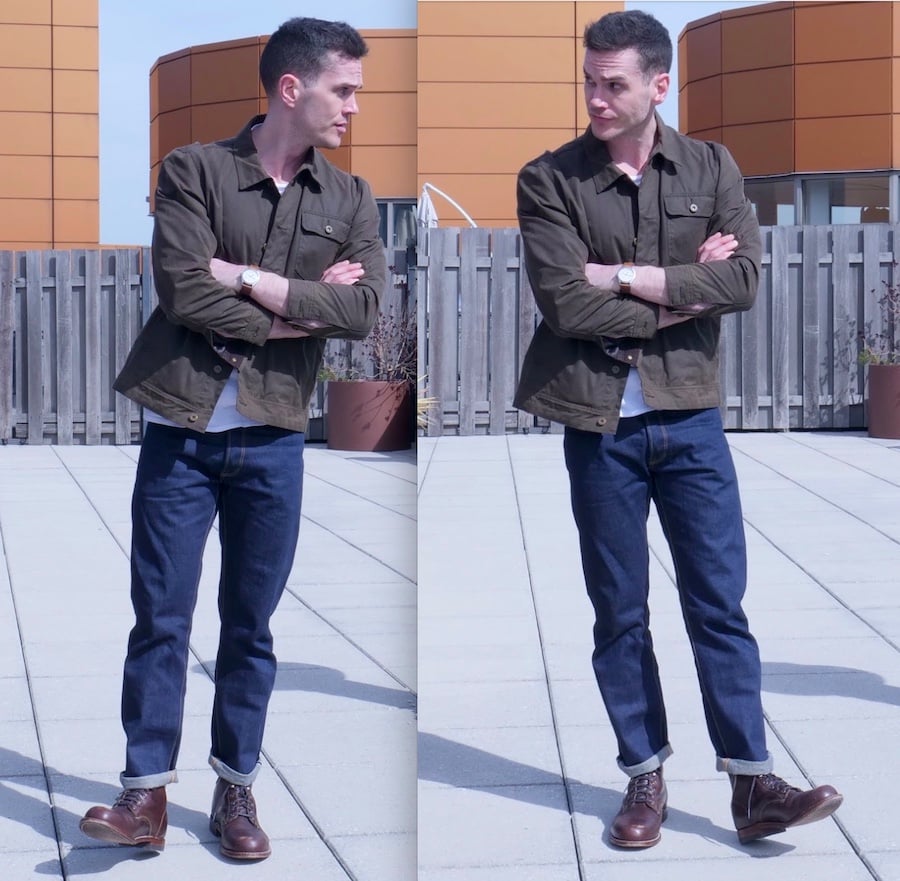
Sanforization vs. Washing: What’s the Difference?
Sanforizing is a much more controlled process than washing your jeans at home.
“When you wash at home, some people do cold washes, some people do 30 degrees, 40 degrees,” says Mohsin. “The temperatures completely change the fabric in ways different from the controlled sanforization process.”
In this way, guys who buy unsanforized jeans have a little more control over how they’ll fit.
So What Does “Loomstate” Mean?
Loomstate is unsanforized and raw, and unwashed: the fabric has come directly off the loom. It’s essentially the most untouched form of denim. This term isn’t used that often, but that’s what it means.
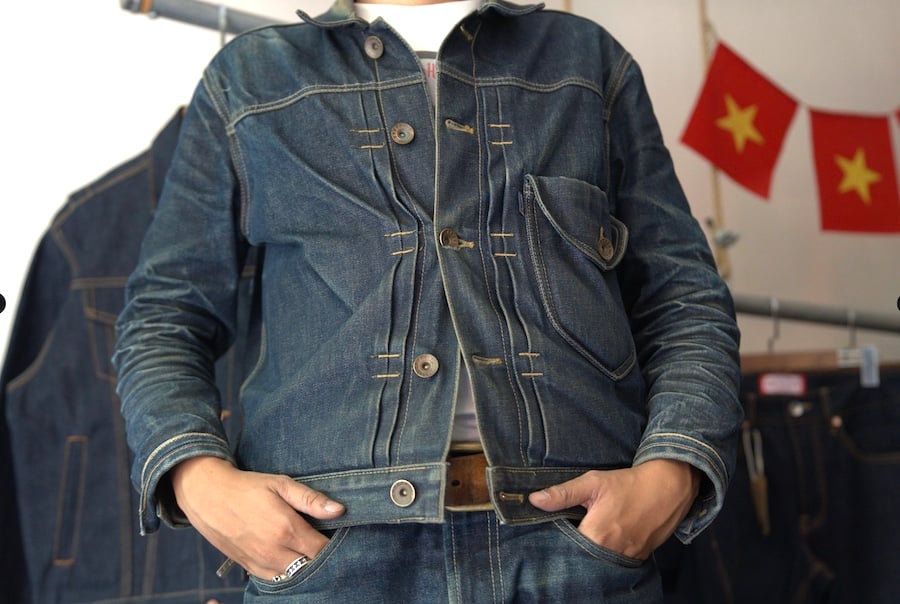
Sizing and Shrinkage: Do Raw Denim or Unsanforized Denim Shrink?
Whether or not it’s sanforized, raw denim will shrink a bit the first time you wash it. The difference is by how much.
“Raw denim will shrink to a maximum of two or three percent,” says Lennaert. “Raw, unsanforized denim shrinks more than twice that amount: some ten percent. And the warp shrinks more than the weft, so you’ll lose more in the length of the legs than in the width of the waist.”
If you don’t mind all the work that goes into preparing a pair of unsanforized jeans for wear, go for it. But for almost anyone, your best bet is just to buy sanforized jeans.
“It’s still raw, you can still break it in the same way, but instead of shrinking by two inches in length, you might just lose one centimeter or something.”
Unless…
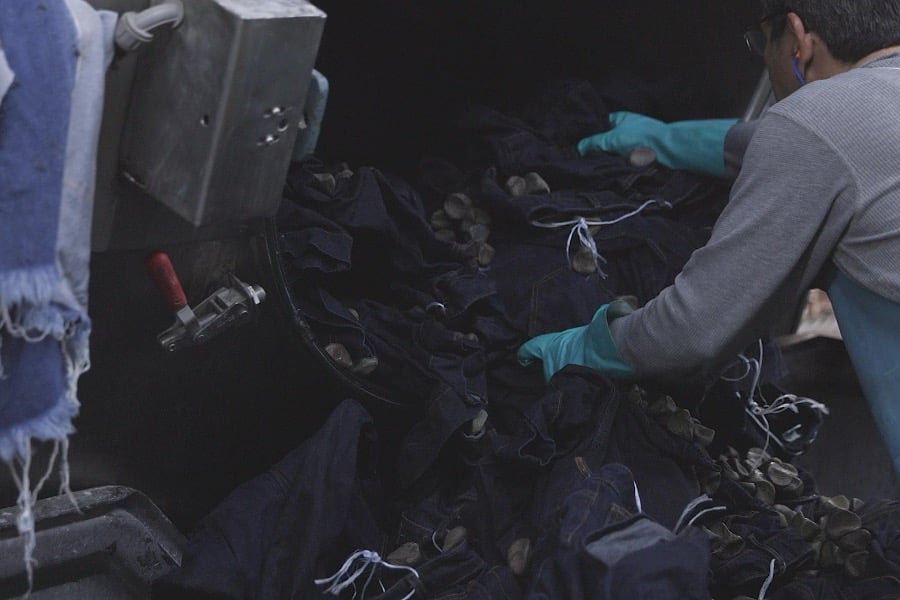
What “One Wash” Denim Is
Unsanforized denim will shrink a few inches when you wash it — unless it’s also labeled one wash.
“One wash basically means that the brand has already done the first wash to get that ten percent shrinkage out,” says Lennaert. “So you’re safe with the size, but the jeans are no longer raw. If you prefer a crisp pair of raw jeans, go for sanforized and unwashed.”

What If I Don’t Know If a Jean is Raw, Sanforized, Etc?
This is pretty simple.
If it’s raw denim, the brand will usually say so. If they don’t, assume it isn’t — but do your best to find out from the brand first, as it’s just more likely that any pair of jeans isn’t raw.
If the jeans aren’t explicitly described as “unsanforized,” then they’re sanforized.
If it’s explicitly described as “unsanforized” but it doesn’t say if it’s “one wash” or not, then it isn’t one wash, and you can expect shrinkage.
This is because no brand wants to deal with customer returns, so they’ll be more explicit about descriptors that affect sizing and shrinkage.
But again: always ask the brand first if you’re not sure. If you can’t, then I’d move forward with the assumptions above.
The Great Debate: Is Sanforized Denim Still Raw?
This is a point of discussion in the denim community.
Certain purists argue that any treatment, including sanforization, means the denim isn’t truly “raw.”
But most brands and enthusiasts, including our two experts here, consider unwashed sanforized denim to still be “raw.”
The Takeaway
- You can have selvedge denim that is not raw
- You can have non-selvedge denim that is raw
- Raw denim can be either sanforized or unsanforized
We hope this guide has helped demystify the terms raw, selvedge, sanforized, and one wash, allowing you to better appreciate the craftsmanship and diversity in the world of denim.
If you’re wondering why we didn’t mention super thick, slubby, or neppy denim, that’s because those are characteristics of certain denims that, like the color, don’t necessarily have anything to do with whether it’s selvedge or washed.
But to learn more about this fundamental part of the raw denim scene, check out our guide to slub versus nep — a guide to “character” in denim.

